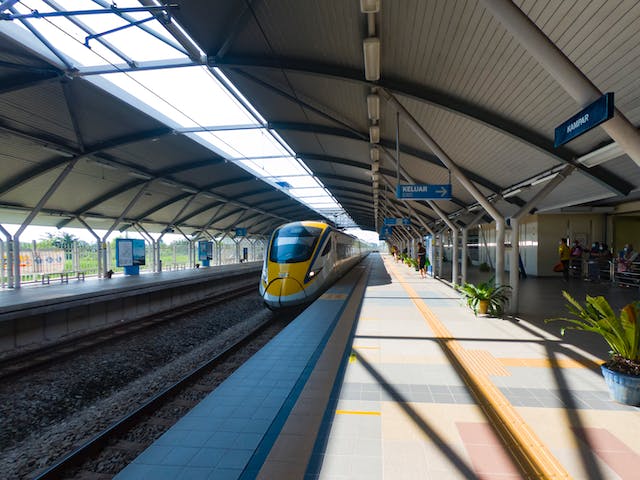The Benefits of Implementing BIM in Railways for Asset Management
Discover the exciting possibilities that await in the realm of railway asset and infrastructure management as we embrace Building Information Modeling (BIM). BIM technology is revolutionizing the way we analyze, design, construct, and maintain railway systems. With its advanced capabilities, BIM offers a more efficient and streamlined approach to managing assets and infrastructure. Say goodbye to traditional manual processes and welcome a future where data-driven decision-making becomes the norm. By leveraging BIM in railway management, we can enhance safety measures, optimize maintenance schedules, minimize downtime, and ultimately deliver exceptional service to passengers. Embrace this transformative technology today and pave the way for a smarter future in railway asset management!
BIM (Building Information Modeling) has proven to be a valuable tool in the asset and infrastructure management of railways. By utilizing BIM throughout the lifecycle of railway assets, stakeholders can efficiently manage, maintain, and optimize these assets for long-term performance and sustainability. BIM, or Building Information Modeling, has indeed emerged as an invaluable tool for asset and infrastructure management in the railway industry.
Its application throughout the lifecycle of railway assets offers numerous benefits to stakeholders involved. One key advantage of utilizing BIM in railway asset management is enhanced efficiency. By creating a digital representation of the assets, such as tracks, bridges, and stations, stakeholders can easily access and manage crucial information related to these assets. This allows for streamlined communication and collaboration among different teams involved in asset maintenance and optimization efforts. Moreover, BIM enables stakeholders to make informed decisions regarding asset maintenance and upgrades. By analyzing various data sets within the BIM model, such as condition assessments and performance data, stakeholders can identify areas that require attention or improvements. This proactive approach helps optimize long-term performance while minimizing disruptions to daily operations.
The use of BIM also facilitates effective resource allocation by providing a comprehensive overview of all assets within a railway system. Stakeholders can assess the condition of each asset, plan maintenance schedules accordingly, and allocate resources efficiently based on priority areas identified through analysis within the BIM model. Furthermore, sustainability considerations are also addressed through the implementation of BIM in railway infrastructure management. The ability to simulate different scenarios using BIM aids in identifying energy-efficient solutions during design stages while considering factors like material usage or alternative energy sources. This ensures that long-term sustainability goals are considered from early planning phases onward. In summary, deploying BIM technology throughout the lifecycle of railway assets empowers stakeholders with enhanced efficiency in managing these critical components effectively. By leveraging digital representations combined with data analysis capabilities offered by BIM models, decision-making becomes more informed leading to optimized performance levels over time while ensuring long-term sustainability objectives are met.
One of the key benefits of BIM in asset management is the ability to create a digital twin of the railway infrastructure. This virtual representation includes detailed information about the assets, such as bridges, tracks, tunnels, and signaling systems, along with their physical and functional characteristics. This digital twin serves as a centralized repository of information, making it easier to access and update data related to maintenance activities, inspections, repairs, and replacements.
The concept of creating a digital twin of railway infrastructure through Building Information Modeling (BIM) brings numerous advantages to asset management. By encapsulating detailed information about assets like bridges, tracks, tunnels, and signaling systems, BIM offers a powerful tool for centralized data storage and management.
The digital twin acts as a comprehensive repository that holds essential information about the physical and functional aspects of these assets. This means that crucial details related to maintenance activities, inspections, repairs, and replacements can be easily accessed and updated within the system. Having this centralized repository allows for seamless collaboration among various stakeholders involved in asset management. Engineers, maintenance crews, inspectors, and other personnel can access the digital twin to retrieve real-time data on asset conditions or track any changes made during maintenance. Moreover, BIM’s ability to provide accurate visual representations aids in planning future maintenance projects more effectively. By simulating scenarios within the virtual environment of the digital twin, potential issues or conflicts can be identified beforehand. This proactive approach helps optimize resource allocation while minimizing disruptions caused by unexpected challenges during actual on-site work.
Overall, the ability to create a digital twin using BIM technology presents an invaluable opportunity for enhanced efficiency in railway asset management. With its centralized information repository and visualization capabilities, it streamlines processes related to monitoring asset conditions and planning necessary interventions efficiently.
What is the role of BIM in railway asset and infrastructure management?
How can digital transformation improve the efficiency of railway asset management?
What are the benefits of using BIM technology in the railway sector?
How does predictive maintenance contribute to better management of railway assets?
What are some innovations in railway asset and infrastructure management enabled by BIM?
How can data-driven decision making enhance the performance of railway management?
What is the impact of automation on railway asset and infrastructure maintenance?
How does IoT technology help in the monitoring and maintenance of railway assets?
With BIM, asset managers can have real-time access to accurate and up-to-date information about the condition and performance of railway assets. By integrating data from various sources, such as sensors, inspections, and maintenance records, they can make informed decisions regarding maintenance strategies, asset replacements, and upgrades. This proactive approach helps to minimize downtime, reduce costs, and enhance the overall reliability and safety of railway operations.
BIM also enables better collaboration and coordination among different stakeholders involved in asset management. By providing a shared platform for information exchange, communication gaps can be minimized, and everyone involved can work together more efficiently. This collaborative approach improves decision-making processes, ensures accountability, and enables effective asset planning and utilization. BIM indeed revolutionizes collaboration and coordination among various stakeholders in asset management. With its shared platform for information exchange, communication gaps are significantly reduced, leading to enhanced efficiency and productivity among team members.
This collaborative approach fosters better decision-making processes by ensuring that all key players have access to the most up-to-date information, facilitating informed choices that align with organizational goals. Furthermore, BIM promotes accountability within asset management practices. By providing a transparent view of project progress and responsibilities, it becomes easier to track individual contributions and overall performance.
The clarity offered by BIM empowers teams to take ownership of their tasks and enables efficient resource allocation. Effective asset planning is another area where BIM excels. With its comprehensive data modeling capabilities, it allows for accurate analysis of assets throughout their lifecycle. This enables organizations to plan for future needs effectively while optimizing the utilization of existing assets. Overall, BIM’s collaborative nature drives synergy among stakeholders involved in asset management activities. By streamlining communication channels and creating a unified platform for information sharing, organizations can unleash the full potential of their teams while ensuring efficient asset planning and utilization strategies.
Furthermore, BIM can facilitate predictive and preventive maintenance strategies for railway assets. By analyzing historical data and utilizing advanced modeling and simulation techniques, asset managers can identify potential issues and predict maintenance needs before they become critical. This proactive approach helps to extend the lifespan of assets, optimize maintenance schedules, and reduce costs associated with reactive maintenance.
In summary, BIM supports effective asset and infrastructure management in the railway sector by providing a digital twin of the assets. This enables stakeholders to access accurate and up-to-date information, collaborate more effectively, and make informed decisions regarding maintenance, upgrades, and replacements. Embracing BIM in railway asset management can result in improved performance, reduced costs, and enhanced safety for railway systems.


One thought on “The Future of Railway Asset and Infrastructure Management with BIM”